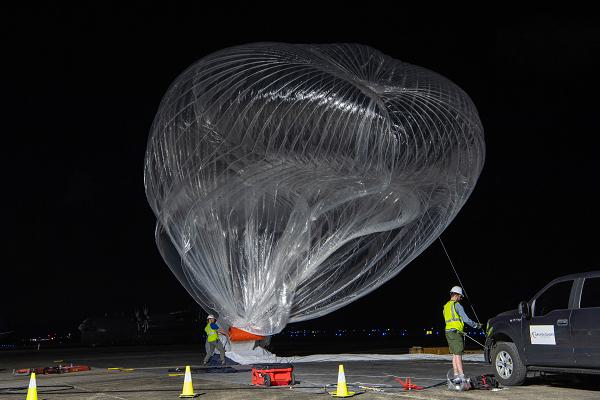
Antonio B. Won Pat International Airport, Guam. (June 10, 2024): With the recent shoot down of a Chinese spy balloon, many Americans are asking if we still use balloons in our Air Force. In this photo by Senior Airman Natalie Doan, Flight operations personnel prepare to launch a high-altitude balloon in support of Exercise Valiant Shield 2024. The U.S. military continues to use balloons of all types for long endurance, persistent air capabilities that serve as platforms for a variety of payloads and sensors.
The first recorded use of balloons for military purposes was in China during the Han Dynasty in 202 BC. The Chinese used lanterns for military communications including paper-made hot air balloons to signal a call for rescue. During the American Civil War, the Union Army established the Balloon Corps which employed “aeronauts” flying gas-filled balloons to spy on the Confederate Army. During World War II, the Navy used balloon airships in anti-submarine warfare in the Mediterranean.
Balloons also have a long history of espionage. As early as 1850, the American military established the Corps of Topographical Engineers for mapmaking and observation of enemy troops. When tethered to the ground, these “kites” provided a stable platform to gain a bird’s eye view of troop positions and movements on the battlefield.
Balloons and kites were the first inventions used in aerial warfare and their primary role was reconnaissance. Later, incendiary devices were added to light fires or drop explosives on enemy positions.
Despite their simplicity, hot air balloons remain a vital part of U.S. military strategy and are deployed for some very high-tech purposes. In 2019, for example, the U.S. Southern Command commissioned tests on using balloons to locate narcotic traffickers while researchers at the Center for Strategic Studies explored ways to use them for communications datalinks.
Officially called High-Altitude Extended-Range Long Endurance Intelligence Observation System, or HELEIOS, these high-altitude inflatables fly up to 90,000 feet with the potential to jam or disrupt enemy communications. They will eventually provide a surveillance network that could be used to track and defeat hypersonic weapons.
Over the past two years, the Pentagon has spent about $3.8 million on balloon projects so it would appear the use of balloons is here to stay.


